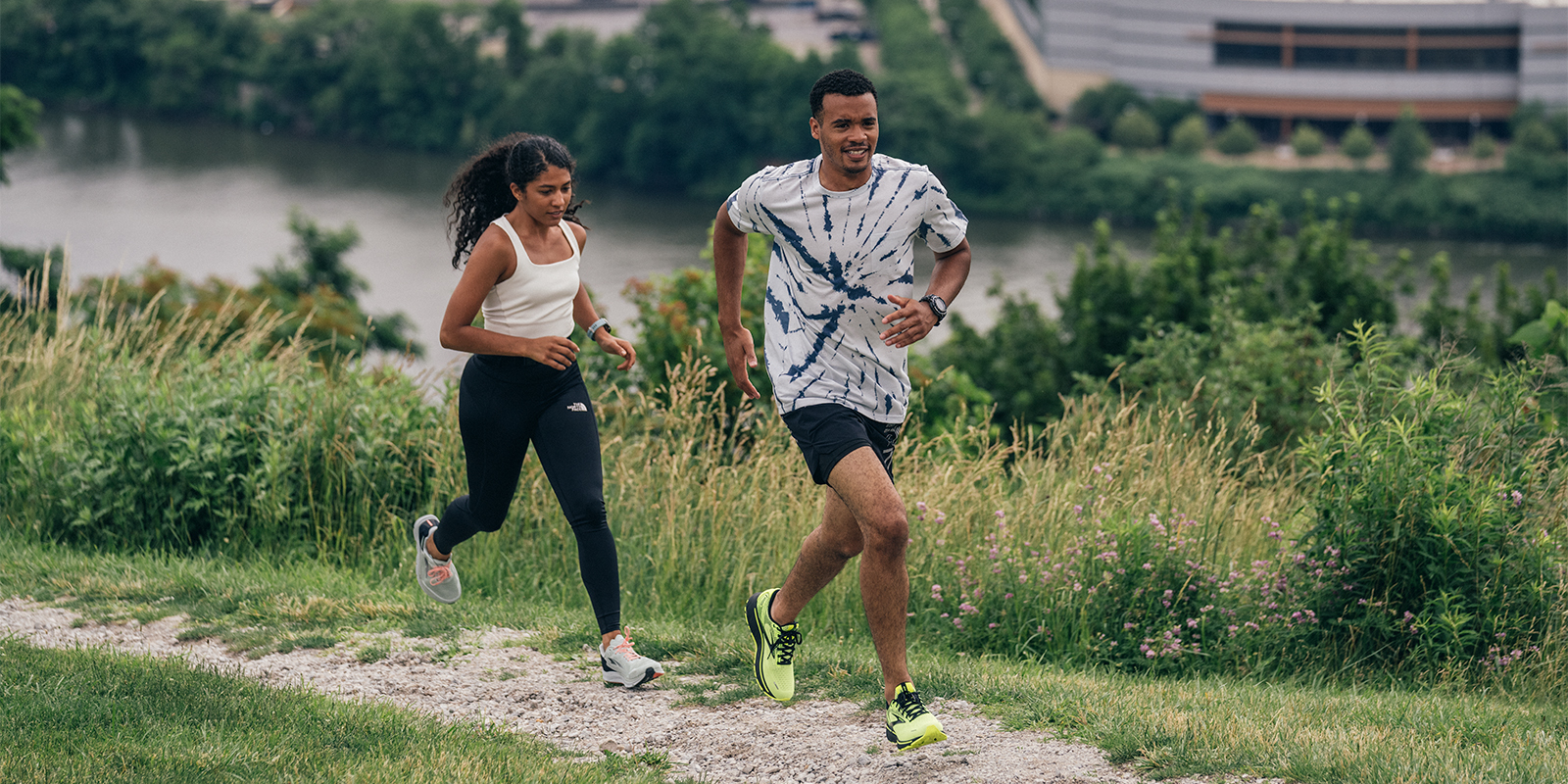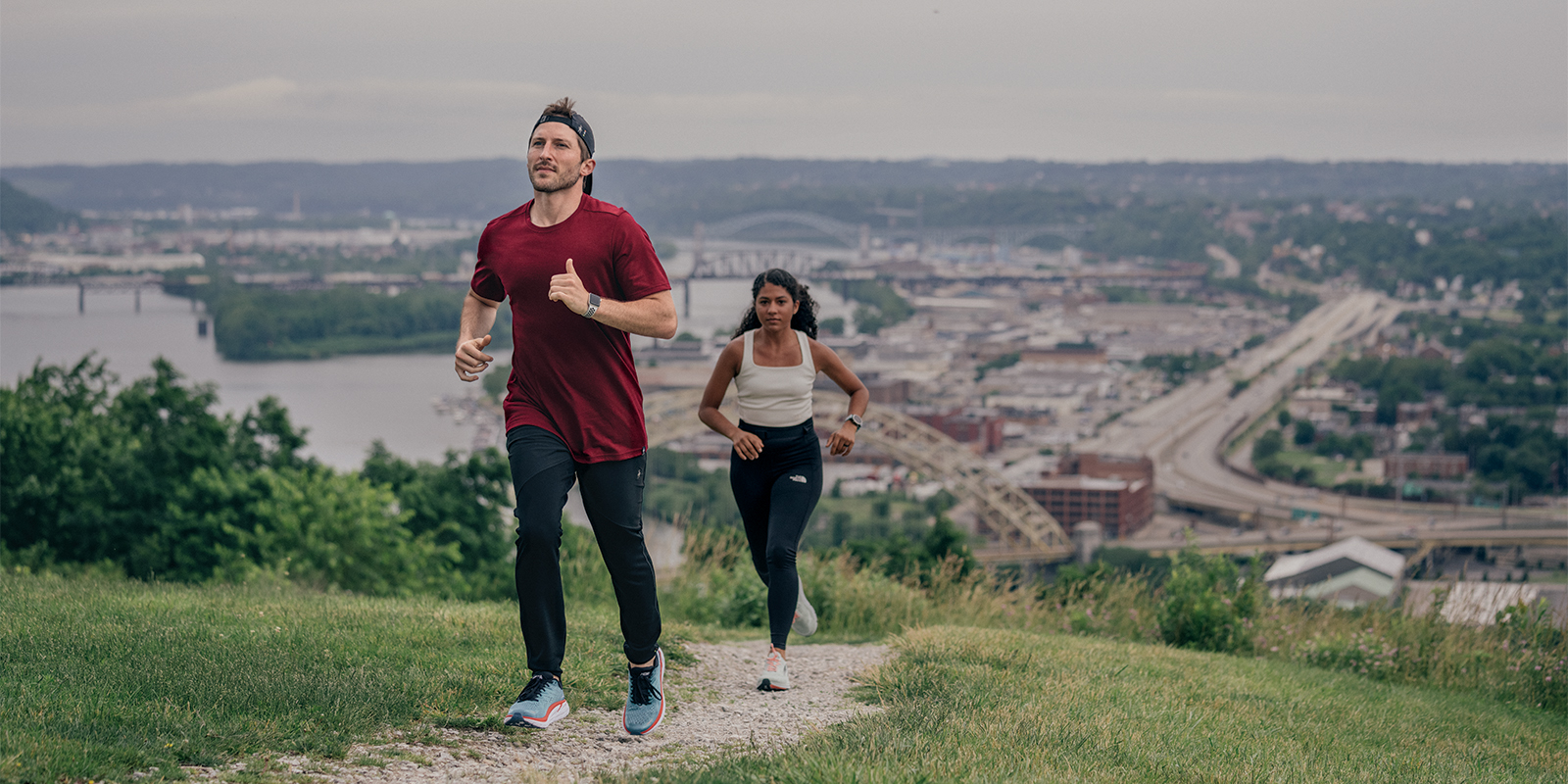Running tends to get a bad rap, with skeptics pointing to the impacts on your knees and hips. The truth is that running is good for building bone density and has a multitude of benefits, from improved heart health to maintaining a healthy weight. And the mental health upside certainly cannot be overlooked. But, due to the repetitive motion of running, overuse injuries can, and do, strike even the healthiest of people.
This guide will help you avoid running injuries by learning how to:
- Increase mileage gradually, mix up your running, give yourself needed time off, and wear proper footwear (plus replace it regularly)
- Tell the difference between pain that hurts so good and pain that you need to listen to and address
- Integrate stretches and strengthening movements that benefit runners of any level
The 10% Rule, Give or Take
What’s known as “The 10% Rule” has been kicked around running circles by coaches for decades. It’s the notion that a runner shouldn’t increase the amount of mileage they run by more than 10% a week. Does every runner follow the rule? No. Do all runners who increase their mileage by 12 or 15% (gasp!) per week crumble to the ground in pain? No. But, the theory is proven to help ward off overuse injuries and keep runners healthy by gradually increasing their weekly mileage.
Mix It Up
Running the same surface all the time, especially if that surface is concrete, can give your body a harsh, cumulative pounding. Mixing up the surfaces you run—say, running smooth dirt one day, asphalt the next, throwing in a rocky trail once in a while—keeps your body guessing, which is a good thing. Likewise, mixing up the speeds you run, especially if you always tend to run close to your max effort, gives your body a break.
Take Time To Recover
It’s been said time and again: Days off from running are just as important as training days. Your body needs the recovery time to repair itself before getting after it again. Recovery days make time for all the other sports you may do (swimming and yoga are complementary); just note that if you do other activities on a day off from running, especially if those activities tax your legs (like cycling), they should really only be counted as rest days if you do them gently.
Wear the Right Shoes (and Replace Them When Needed)
Wearing shoes that aren’t right for your specific gait/stride pattern, or even shoes that fit improperly, can wreak havoc on your body. Just picture striking the ground over and over, for thousands of steps, in a shoe that forces your foot into a bad position for your body, or in one that has deteriorated cushioning. A general rule is to replace running shoes every 300 to 400 miles. If you don’t track mileage, however, tell-tale signs of when it’s time include: shoes that used to be cushy now feeling flat; suddenly achy knees or hips; outsoles worn down in one particular spot.
Good Pain/Bad Pain
Running hurts, but sometimes that hurt is the kind that lets you know you’re alive—the kind of pain alerting you that you’re getting fit and strong. Generally, good pains come in the form of bilateral muscle soreness (both quad muscles are sore, instead of just one of them), or even aches you feel during a run but get better throughout a run.
Pains you should listen to are the kind that don’t go away after 24 hours or so post-run (aside from muscle soreness that can come on 48 hours post-run). Other pains to take note of are the ones that feel like stabbing pain mid-run, or even the dull aches that bug you mid-run. Those are worth taking some extra time off to allow to calm down, or to see a practitioner.





